Time on land and in the water plus a small ship to call home equals the perfect combination for exploring the Galapagos Islands. Today, it’s tortoise time on Isla Santa Cruz!
Disclosure: This post may contain Affiliate Links.
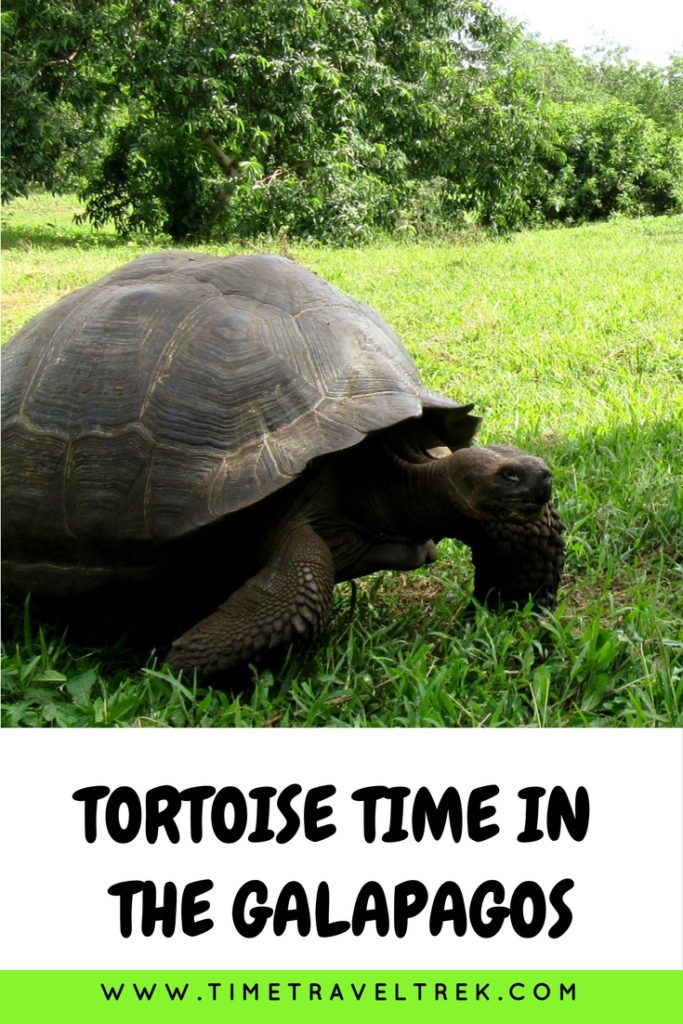
Table of Contents
Ready, Set, Go Galapagos
We started our tortoise tour by visiting the Charles Darwin Research Station in Puerto Ayora, arriving early before the crowds. It was the final day of the land portion of our Galapagos adventure.
The Charles Darwin Research Station is the perfect place to learn about giant tortoises. Giant tortoises have long been the focus of attention in Galapagos. These prehistoric wonders were once viewed as nothing more than a source of food and fuel.
Tortoises can last for up to a year without food or water. As a result, hundreds of thousands of tortoises were taken by sailors as fresh food for long trips. Tortoise oil was also burned in lamps. The fragile population of giant tortoise also suffered due to predation by rats brought in on ships. Because of all of this unwanted attention, four tortoise species are now extinct in the Galapagos.
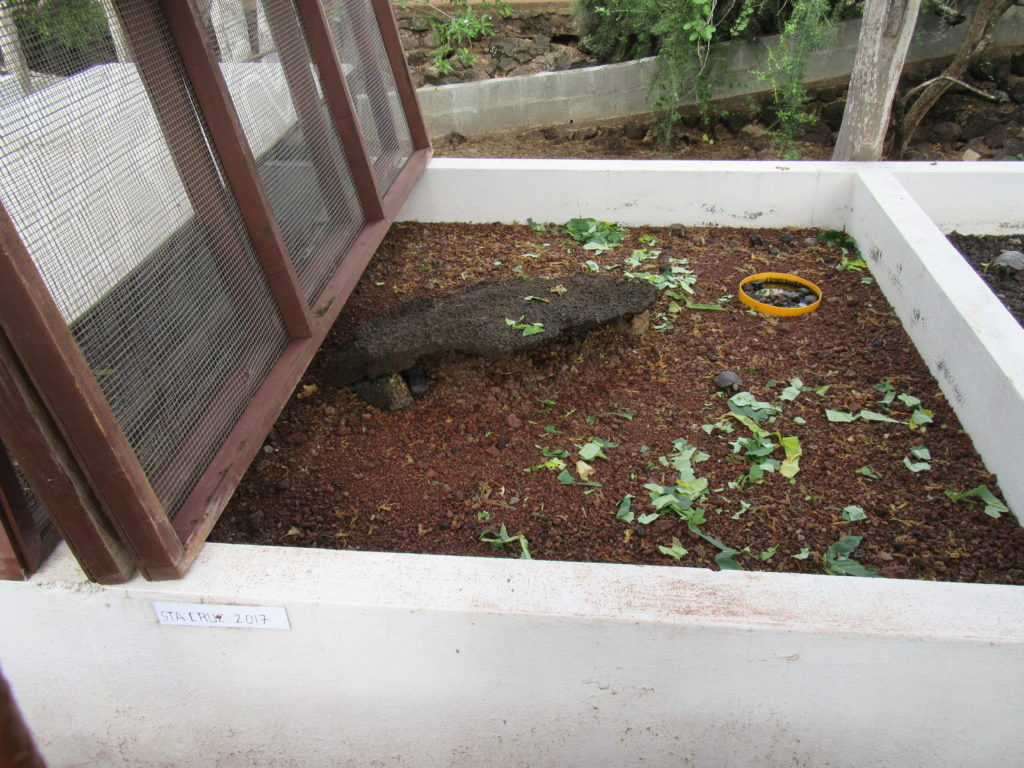
Learning More During Tortoise Time in the Galapagos
One of the goals of the Charles Darwin Research Station is to provide a rearing facility for endangered species. Pens of young tortoises from several months to several years old give us our first glimpses of one of the keystone species of the Galapagos Islands’ unique fauna. Hard to believe these little ones will grow into adults weighing upwards of 215 kilograms (475 pounds). Click, click, click – too many photos, but these tortoise tots are so darn cute!
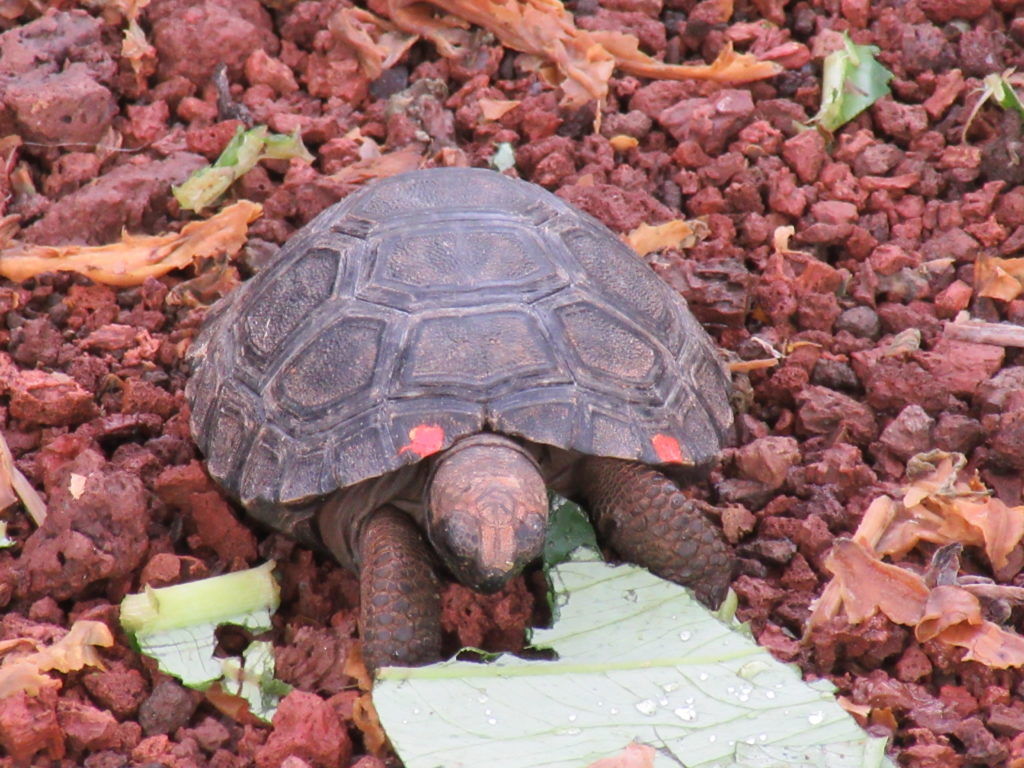
A Tortoise by Any Other Name
A noisy buzz at the research station was all about Lonesome George. He is finally home again. Well, at least the preserved version of Lonesome George is home again.
Lonesome George was discovered in 1971. This Pinta Island giant tortoise was the last of his kind. Each island has a distinct species of giant tortoise. George was it on Pinta Island. He became the poster-boy for giant tortoises throughout the Galapagos.
In 1972, George was brought to the rearing centre in Puerta Ayora for protection. It was hoped that researchers would also be able to find a mate for the lonely fellow to preserve his genetic heritage. No such luck.
Lonesome George died in 2012 without reproducing. His body was sent to the United States for preservation. The remains recently came back to the Galapagos and are now on display in a specially-lit, climate-controlled room.
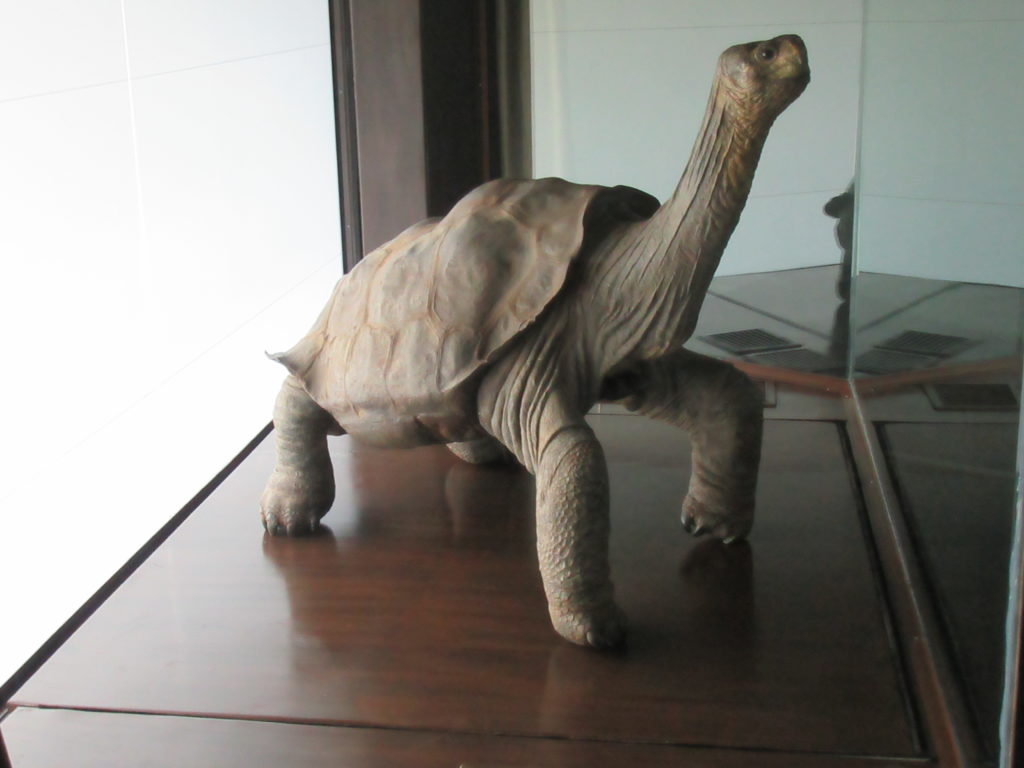
Way to go, Diego!
Personally, I think George is overshadowed by Diego. He is an endangered giant tortoise from Isla Española. By 1960, only 14 adult tortoises remained on Española – 12 females and 2 males. Researchers took them into captivity to start a rearing program.
Diego was a captive Española tortoise brought back from the San Diego Zoo in 1975. As a result, he became the third male for the tiny group teetering on extinction. Now over 100 years old, Diego has fathered an estimated 800 offspring. Way to go, Diego!
Living Large and Free
Meeting up with rest of our boat gang in the afternoon, we headed up to the highlands and El Chato Ranch. El Chato is a private ecological reserve where giant tortoises have free reign.
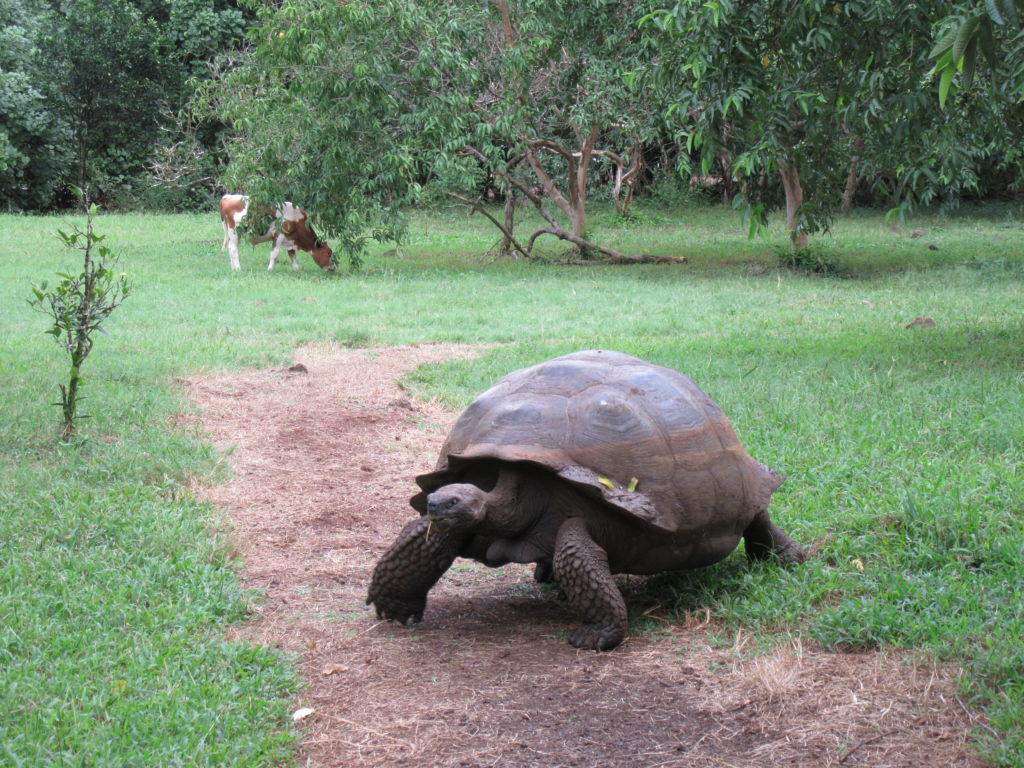
This ecological reserve is actually a working farm. Tortoises come and go as they please. Tourists flock to the ranch to see these giants munching on fallen guava fruit and grazing next to livestock. It can be difficult to stay the required 2 metres (6 feet) away when these giants cut a straight path through the crowd!
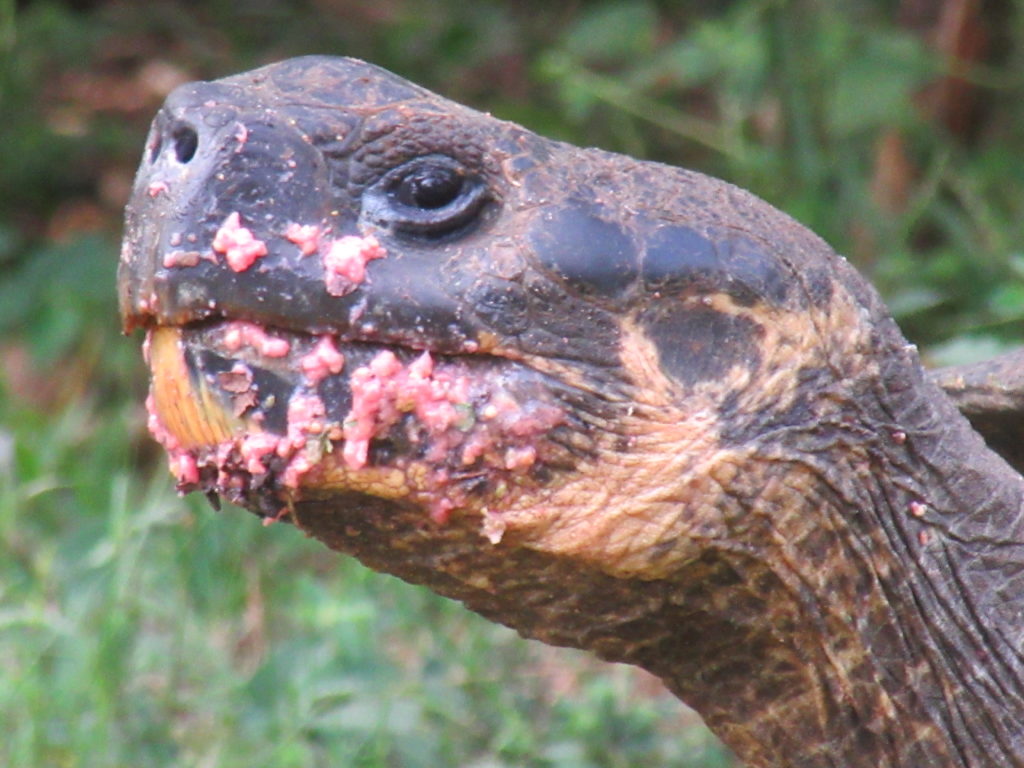
Giant tortoises migrate seasonally from highlands to lowlands. You can follow their movements at www.movebank.org. Far too soon, our tortoise time is done for the day. The Monserrat is calling our names. ‘Til next time, tortoises!
Next up: All Aboard for Lizard Land in the Galapagos


Leave a Reply